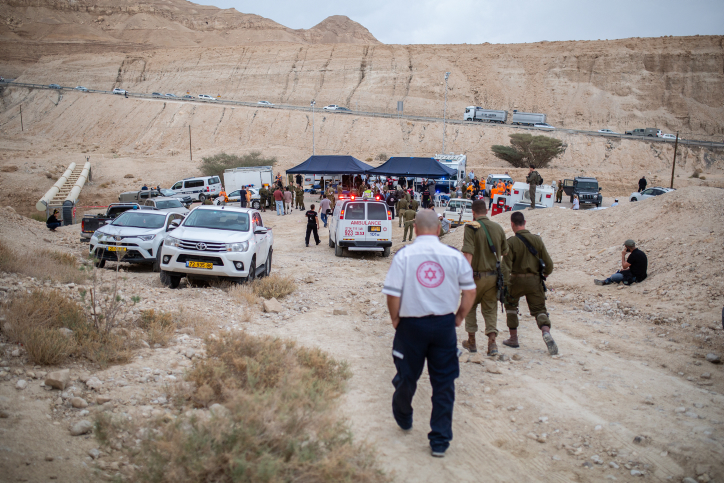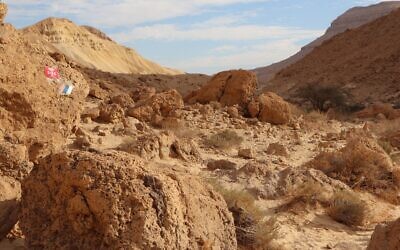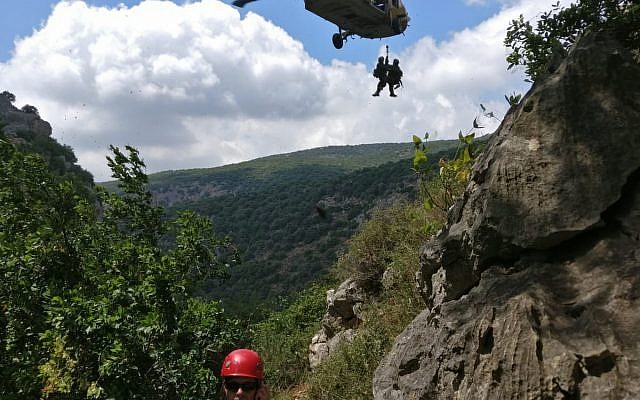Project beaming signals to special routers in canyons and other places without cell reception developed in wake of 2018 flash flood that left 10 teenagers dead
The off-grid device, SOS WiFi (website in Hebrew only), beams a signal that allows cellphones to freely connect to the internet even in some of the most remote parts of the country, potentially allowing hikers to be warned of danger or giving them a lifeline to the outside world if they need rescue or help.
The idea for the remote connection was triggered by the Tzafit stream disaster, said Avishai Berman, the CEO of Bein Hashitin, the educational nonprofit that developed SOS WiFi.
“The tragedy really shook us up and still shakes us up,” said Berman, whose organization operates educational programs in the Arava desert in southern Israel, including a pre-military academy. “There isn’t a week when we don’t talk about it. Our response was to try to develop something that goes beyond all the academies, something bigger, that would help people to hike more safely.”
It’s not clear if a device would have helped the victims in Tzafit, who were on a group-building hike organized by the Bnei Zion pre-military academy, which they were slated to attend the next fall.
According to allegations, organizers went ahead with the hike despite warnings of hazardous weather conditions. In October last hear, Bnei Zion academy’s ex-director and ex-counselor were charged in Beersheba District Court with 10 counts each of negligent homicide.

More than 20 of the devices have been piloted in a dozen nature reserves, in cooperation with the Israel Nature and Parks Authority, with plans to install 40 more by the end of the year. According to Berman, the devices have already proved their worth in around a dozen incidents in the north and south of the country.

In one example, a tour guide with a group at the Zavitan River in the Golan Heights in northern Israel collapsed and went into some kind of seizure. Someone with him was able to use the wifi signal to send video of the incident to the emergency services and to get guidance on what to do.
SOS WiFi uses beamforming, a technology that focuses a wireless signal from an antenna on high ground toward a specific receiving device, in this case a small solar-energy operated router placed in a hard-to-reach location such as a river canyon.
Berman said the project would save time and money as well as lives, given that helicopter searches are costly and often need time to find those in need. While GPS signals do not rely on cellular connections, they can often be weak or drop off in areas with heavy tree cover or deep narrow canyons.
Bein Hashitin is working closely with the various emergency services and aims to make it as easy as possible to contact the relevant service from SOS Wifi’s home page.
Research and development is meanwhile ongoing to make the devices smaller and more energy-efficient.
One idea is to eventually market the system to hiking trails overseas and to use the proceeds for the organization’s activities.
As part of the pilot, devices have already been installed along parts of the following riverbeds: Keziv and Amud in the Western Galilee, Zavitan in the Golan Heights, Og and Darga in the West Bank, Tseelim and Ashalim near the Dead Sea, and Hatira and Hawwa in the central Negev.

SOS WiFi signs have been erected at the entrances to the reserves where the project is active.
Bein Hashitim is raising donations to introduce a further 60 devices over the coming year, with the goal of eventually installing around 300 of them, so that no hiker will ever have to walk too far to pick up reception.
Among the places Berman hopes to install the devices is Tzafit, though the reserve is administered by the Tamar Regional Authority on behalf of the state, and not the Parks Authority, which is collaborating on the project. Various issues need to be resolved before SOS WiFi can work there as well, Berman said.

